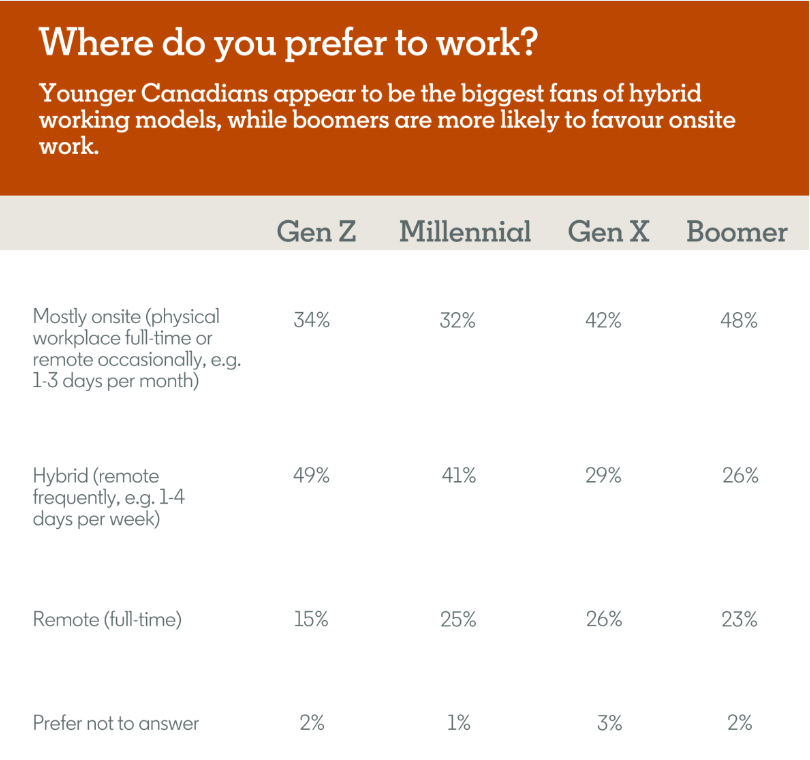Work setup preferences differ by age, says LinkedIn

More Canadian workers want to be able to work at the location of their choice than those who actually are doing so, according to a recent LinkedIn report.
Overall, nearly six in 10 (58 per cent) prefer to work either on a hybrid basis where they’re frequently remote (33 per cent) or fully remote (25 per cent), according to LinkedIn’s survey of 2,658 professionals between September and December 2023.
That number is far more than who were able to do that during that time, according to previous report.
Overall, just about 20 per cent of Canadians were working most of their hours from home in a given week by November 2023, according to Statistics Canada (StatCan).
Meanwhile, 39 per cent prefer to work at a physical workplace full-time, or remote only occasionally, about one to three per month.
Canadians across age groups are also divided when it comes to preference on work location.

Source: LinkedIn
“What’s behind the discrepancy? In part, views varied by age cohort, with Gen Z and millennial workers particularly keen on hybrid working models, and boomers the most likely to prefer mostly onsite work,” says Riva Gold, senior news editor, US & Canada, at LinkedIn.
“This is perhaps a reflection of a preference for remote and hybrid work among parents of young children seeking more flexibility. Gen X was the most likely to favour fully remote models, with 26% of respondents from this cohort endorsing the set-up.”
Flexibility “will encompass all aspects of work,” one expert previously told Canadian HR Reporter.
Wanted: pay increase, promotion
Canadians are also concerned about compensation and career progression.
According to LinkedIn’s survey, 55 per cent of employed Canadians received a pay rise in the past year, and 46 per cent expect to receive one in the next six months.
More than eight in 10 (81 per cent) Canadian professionals are on the hunt for new job opportunities this year, driven by the quest for better pay, according to a previous report from Robert Walters.
About a quarter (24 per cent) also expect to be promoted within the next year, and many plan to improve their skills this year with online (59 per cent) or classroom (34 per cent) instruction, according to LinkedIn’s report.
How do you structure a hybrid work schedule?
Here’s how to develop a hybrid work schedule for your organization, according to the Academy to Innovate HR (AIHR):
- Understand the reason why your organization wants to introduce hybrid work.
- Determine the organization’s readiness.
- Gather employee input.
- Determine the feasibility of a hybrid work schedule.
- Consider who determines the hybrid work schedule.




